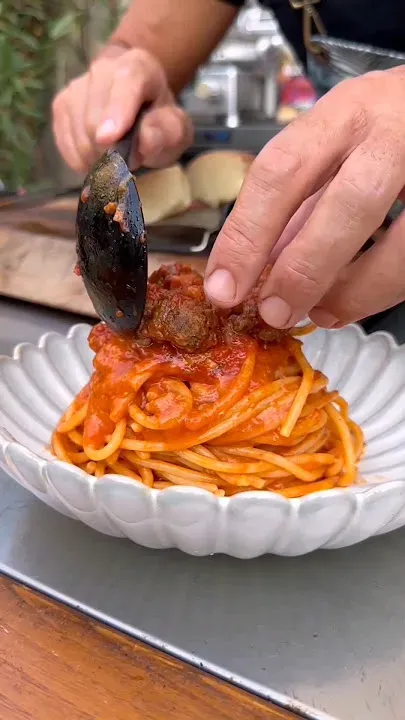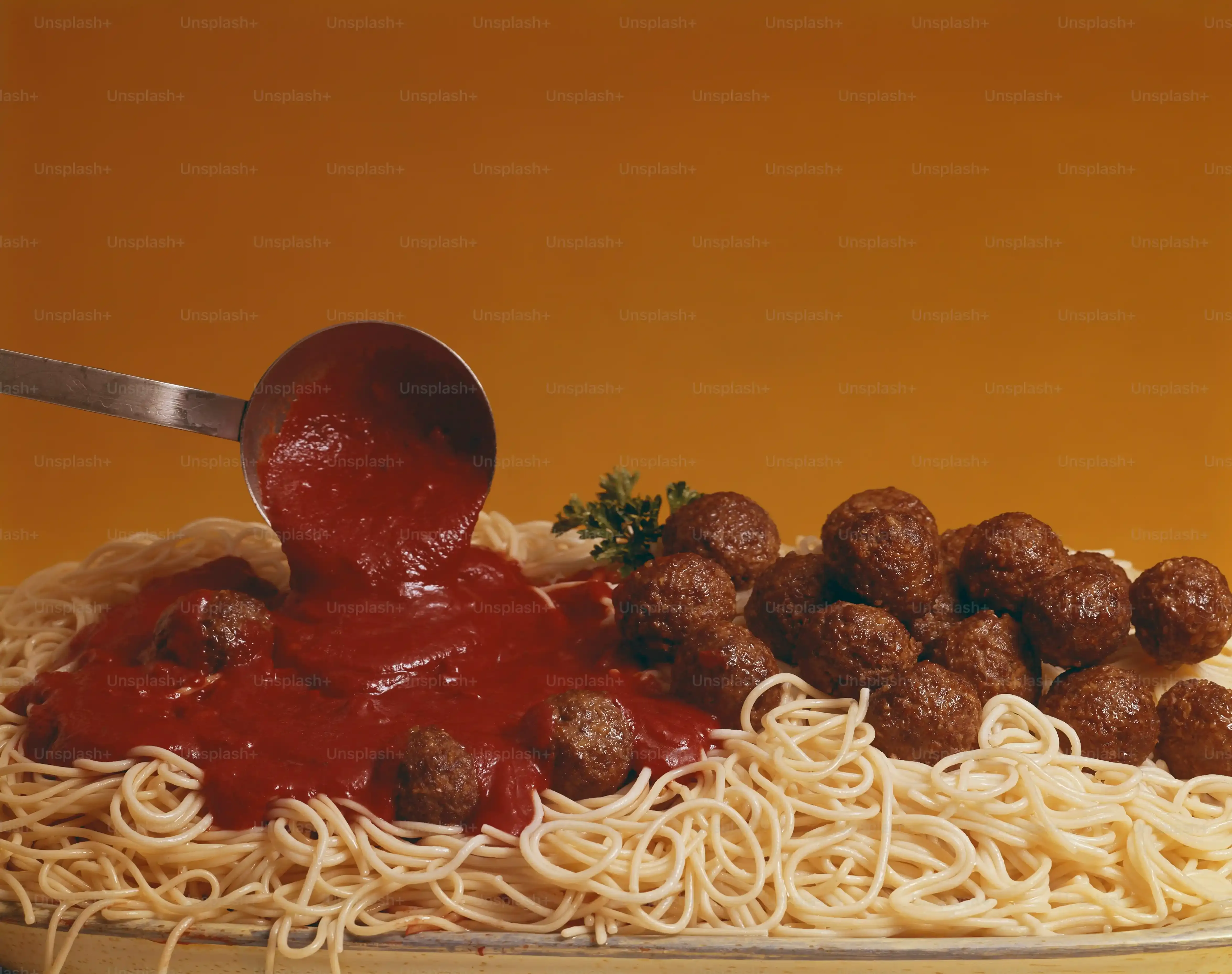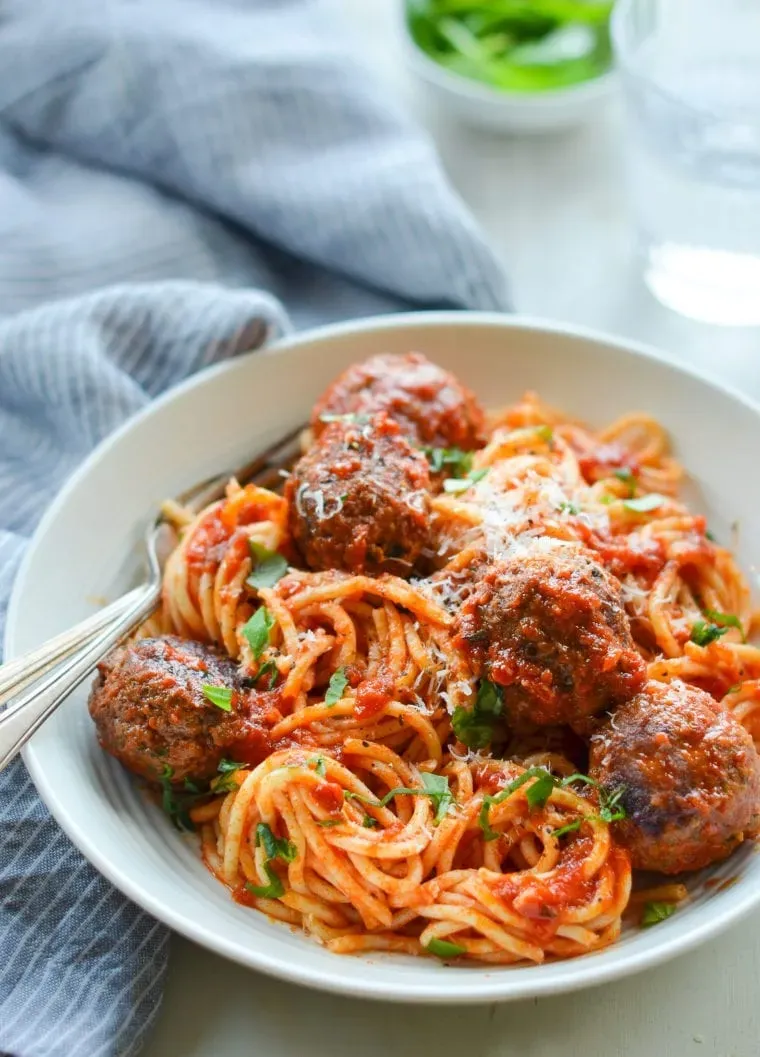Table of Contents
Ever scrolled through social media and seen someone raving about Chef Max Mariola's spaghetti and meatballs? There's a reason his take on this classic dish gets so much buzz. It's not just pasta and meat; it's comfort food elevated, built on simple, quality ingredients and techniques that make a real difference. Maybe you've tried making meatballs before and they turned out tough, or the sauce lacked that deep, rich flavor you crave. You're not alone. Recreating restaurant-quality Italian at home can feel daunting, especially when it comes to iconic dishes like this one.
Cracking the Code: Why Chef Max Mariola's Spaghetti and Meatballs Recipe?

Cracking the Code: Why Chef Max Mariola's Spaghetti and Meatballs Recipe?
Beyond the Basic Red Sauce
Let's be honest, everyone's got a spaghetti and meatballs recipe. Your nonna had one, your neighbor swears by theirs, and the internet is flooded with variations. So why bother with Chef Max Mariola's spaghetti and meatballs recipe specifically? Because it cuts through the noise. It’s not about secret ingredients you can't pronounce or techniques requiring a culinary degree. It’s about focusing on the fundamentals done exceptionally well. Think deeply flavorful meat that isn't a dense brick, and a sauce that tastes like tomatoes, not just sugar or dried herbs. It's the kind of dish that silences the table for a few minutes, punctuated only by contented sighs.
What Sets This Recipe Apart?
The difference often lies in the details nobody talks about. It’s the type of meat mix used, the way the breadcrumbs are handled, or the patience in simmering the sauce. Chef Mariola’s approach strips away the unnecessary fuss and zeroes in on maximizing flavor and texture with straightforward steps. No need for hours of prep or exotic pantry items. It’s a practical method for achieving that rich, comforting depth that makes a classic dish truly memorable. You get results that taste like they took all day, but don't actually demand it.
So, what's the real secret?
- Focus on fresh, quality ingredients.
- Don't overwork the meatball mix.
- Give the sauce time to develop flavor.
- Balance is key – not too sweet, not too acidic.
The Heart of the Dish: Crafting Chef Max Mariola's Meatballs

The Heart of the Dish: Crafting Chef Max Mariola's Meatballs
Getting the Mix Right
Alright, let's talk meatballs. This isn't just ground meat rolled into a ball; it's the core of the dish, the part everyone secretly judges first. If your meatballs are hockey pucks, the whole thing falls apart. Chef Mariola’s approach nails that tender, flavorful result without turning it into a science project. It starts with the right blend of meats – typically a mix of beef, pork, and sometimes veal. This blend provides depth and keeps things moist. Don't skimp here; lean beef alone makes for dry, sad meatballs. You need that fat from the pork to keep them juicy as they simmer in the sauce.
Beyond the meat, it's about the binders and flavorings. Breadcrumbs are key, but not just any breadcrumbs. Stale bread soaked in milk or water, then squeezed dry, creates a far more tender texture than dried crumbs from a box. It’s a small step, but it makes a noticeable difference. Then come the usual suspects: garlic, parsley, Pecorino Romano or Parmesan cheese, maybe a pinch of red pepper flakes for a little warmth. An egg helps hold it all together, but the real trick is how you mix it.
- Use a mix of ground beef and pork (80/20 blend is a good starting point).
- Soak stale bread in milk or water for tender results.
- Finely chop garlic and fresh parsley.
- Grate good quality Pecorino Romano or Parmesan.
- Add one egg per pound of meat mix.
- Season generously with salt and black pepper.
Mixing and Forming
Here’s where people mess up: overmixing. You want to combine the ingredients gently until they are just incorporated. Think of it like making pie dough; too much handling develops gluten and makes things tough. Use your hands, but treat the meat like you’re tucking it into bed, not wrestling it into submission. Overworking the mixture is the fastest way to guarantee dense, rubbery meatballs that nobody wants to eat. Taste a tiny bit of the raw mix (yes, really, just a pinch) after seasoning to adjust salt and pepper before rolling.
Form the meatballs gently as well. Aim for a consistent size so they cook evenly. Somewhere between golf ball and ping pong ball is usually good. Don't pack them too tightly. A light touch keeps them tender. You can pan-fry them first to get a nice brown crust and lock in flavor before adding them to the simmering sauce, or some recipes call for dropping them straight into the sauce to cook through. Frying adds a layer of flavor, dropping them in yields incredibly tender results. Your call, but the fried ones look nicer for photos.
Meatball Mistake | Why It Happens | How to Fix (Chef Max Says?) |
|---|---|---|
Tough/Dry Meatballs | Using only lean meat, overmixing, overcooking. | Use a meat blend, mix gently, don't simmer too long. |
Bland Flavor | Not enough salt/seasoning, dried herbs instead of fresh. | Taste and adjust seasoning, use fresh parsley and garlic. |
Falling Apart | Not enough binder (egg/bread), mix too wet. | Ensure correct bread/egg ratio, squeeze excess liquid from bread. |
Simmering Perfection: The Sauce for Your Chef Max Mariola Spaghetti and Meatballs

Simmering Perfection: The Sauce for Your Chef Max Mariola Spaghetti and Meatballs
Building the Flavor Foundation
you've got those beautiful meatballs ready. Now, they need a place to swim and absorb all that deliciousness: the sauce. This isn't just crushed tomatoes dumped in a pot. A truly great sauce for chef max mariola spaghetti and meatballs is built layer by layer. It starts with a soffritto – a gentle sauté of finely diced onion, carrot, and celery. This aromatic base is non-negotiable. It adds a subtle sweetness and complexity that a plain tomato sauce just can't replicate. Cook it low and slow until the vegetables are soft and translucent, not browned and bitter.
Once your soffritto is ready, garlic goes in for just a minute until fragrant – don't burn it, that’s a one-way ticket to bitter town. Then comes the tomato. Chef Mariola likely uses high-quality canned San Marzano tomatoes, and frankly, so should you. They have the best balance of sweetness and acidity. Crush them by hand or pulse them lightly in a food processor, but avoid making them a watery puree. You want some texture.
The Simmering Art
After the tomatoes are in, add a splash of red wine if you like (optional, but adds depth), maybe a bay leaf, and definitely some salt and pepper. This is where patience comes in. The sauce needs to simmer. Not a rolling boil, but a gentle bubble, lid slightly ajar, for at least an hour, preferably longer. This isn't just about reducing the sauce; it's about marrying the flavors, letting the tomatoes mellow and the soffritto melt into the background.
Taste and adjust seasoning as it simmers. Does it need a pinch of sugar to balance acidity? More salt? A little red pepper flake for heat? This is your sauce; make it sing. Towards the end of the simmering time, those beautiful meatballs you made go into the pot. They finish cooking in the sauce, absorbing its flavor and, in turn, lending their own meaty goodness to the sauce. It’s a beautiful, symbiotic relationship happening right there in your pot.
"A good sauce doesn't rush. It whispers secrets as it simmers." - Probably some wise nonna, or maybe me after a glass of wine.
Finishing Touches and Resting
Once the meatballs are cooked through (they should be tender, not mushy), the sauce is almost ready. A final taste and adjustment is crucial. Maybe a knob of butter stirred in for richness, or a handful of fresh basil leaves torn and added right at the end. The basil should just wilt into the sauce, keeping its fresh aroma. Remember, the sauce for chef max mariola spaghetti and meatballs is about harmony.
Before serving, let the sauce and meatballs rest for a few minutes off the heat. This allows the flavors to settle and deepen further. Trust me, skipping this step is like opening a Christmas present before wrapping it properly – technically functional, but lacks presentation and full impact. So, did you remember to taste and adjust? It's the difference between good and unforgettable.
- Start with a soffritto of onion, carrot, and celery.
- Use high-quality canned San Marzano tomatoes.
- Simmer gently for at least an hour.
- Add meatballs in the last 30-45 minutes of simmering.
- Finish with fresh basil and a final seasoning check.
- Let the sauce and meatballs rest before serving.
Bringing it All Together: Assembling Chef Max Mariola's Classic Dish

Bringing it All Together: Assembling Chef Max Mariola's Classic Dish
Perfecting the Pasta
you've got the meatballs simmering away in that glorious sauce. Now, don't mess it up with sad, overcooked pasta. The pasta is just as important in the chef max mariola spaghetti and meatballs recipe. Use a good quality, bronze-cut spaghetti if you can find it. It has a rougher texture that the sauce clings to better. Bring a large pot of generously salted water to a rolling boil – it should taste like the ocean, seriously. Add your spaghetti and cook it according to package directions, but pull it out a minute or two before it's fully cooked. This is called al dente, meaning "to the tooth." It should have a slight bite to it.
Why al dente? Because the pasta will continue to cook slightly when you add it to the hot sauce. Plus, pasta that's too soft turns into a mushy mess. Nobody wants mushy spaghetti. Reserve about a cup of the starchy pasta water before you drain the rest. This cloudy water is liquid gold. It helps emulsify the sauce and makes it stick to the pasta beautifully. Drain the pasta quickly once it hits that al dente stage.
Marrying Pasta and Sauce
This is the critical step where the magic happens in chef max mariola spaghetti and meatballs. Don't just ladle sauce over a pile of pasta on a plate. That's a rookie move. Instead, add the drained, al dente spaghetti directly to the pot with your simmering sauce and meatballs. Toss everything together gently over low heat for a minute or two. This allows the pasta to absorb some of that incredible sauce flavor and finish cooking.
If the sauce seems too thick, add a splash of that reserved pasta water, a little at a time, tossing constantly. The starch in the water helps bind the sauce to the pasta, creating a silky, cohesive dish rather than separate components. You want every strand of spaghetti coated in that rich, meaty sauce. This step ensures every bite is packed with flavor, not just the ones with a meatball attached.
What's the biggest mistake people make when combining pasta and sauce?
- Serving sauce on top of dry pasta.
- Not using pasta water to emulsify the sauce.
- Overcooking the pasta initially.
- Being impatient and not tossing it together properly.
The Final Flourish
Now that your spaghetti is perfectly coated and glistening with sauce, it's time to serve. Portion the pasta and sauce into bowls. Make sure each serving gets a few of those tender meatballs. Garnish generously with freshly grated Pecorino Romano or Parmesan cheese. A sprinkle of fresh parsley or a few torn basil leaves adds a pop of color and freshness that cuts through the richness. Don't use that pre-grated stuff in the can; it tastes like sadness and wood pulp.
Serve immediately while everything is hot. Chef Max Mariola's spaghetti and meatballs recipe is best enjoyed fresh. This dish isn't fancy; it's hearty, comforting, and deeply satisfying. It’s the kind of meal that makes you feel good from the inside out. So, grab a fork, twirl that pasta, and enjoy the fruits of your labor. You've earned it.
Tips, Tricks, and Serving Your Chef Max Mariola Spaghetti and Meatballs Recipe

Tips, Tricks, and Serving Your Chef Max Mariola Spaghetti and Meatballs Recipe
Making it Ahead and Freezing
So, you’ve just whipped up a batch of Chef Max Mariola's spaghetti and meatballs recipe, and it smells divine. But maybe you made too much, or you’re planning ahead for a busy week. This dish is actually fantastic for making in advance. You can make the meatballs and sauce separately or combine them. Cook the meatballs fully in the sauce, let everything cool completely, then portion it into airtight containers. For freezing, glass containers or heavy-duty freezer bags work best. Make sure to leave a little headspace if using containers, as the sauce will expand slightly when frozen. It's a lifesaver on those nights when cooking feels like climbing Mount Everest.
When you're ready to eat, thaw the sauce and meatballs in the refrigerator overnight, then gently reheat on the stovetop over low heat. Avoid microwaving large portions if you can; it heats unevenly and can make the meatballs tough. Reheating slowly helps the flavors meld again and keeps everything tender. Don't cook the pasta until you're ready to serve, though. Reheated pasta is rarely a good time; it gets gummy and sad. So, the tips, tricks, and serving strategy here is partial prep.
Serving Suggestions and Leftovers
Serving Chef Max Mariola's spaghetti and meatballs recipe isn't complicated, but a few touches elevate it. As mentioned, toss the pasta directly in the sauce. Serve in warm bowls – a small detail, but it keeps the food hotter longer. A simple green salad with a sharp vinaigrette is a perfect counterpoint to the richness of the dish. Crusty bread is non-negotiable for sopping up every last bit of sauce. And don't forget the extra cheese at the table.
Leftovers, if you have any (a big 'if' in my house), are arguably even better the next day. The flavors have more time to deepen and meld. Store leftover spaghetti and meatballs in the fridge for up to three days. Reheat gently on the stovetop. If the sauce seems a bit thick, a tiny splash of water can loosen it up. Freezing extends the life significantly, giving you a ready-made, delicious meal whenever you need it. Mastering the tips, tricks, and serving of your chef max mariola spaghetti and meatballs recipe means enjoying it fully, whether tonight or next month.
"Leftovers are proof you cooked enough, or that you have remarkable self-control. With these meatballs, I suspect the former."
Your Chef Max Mariola Spaghetti and Meatballs, Ready to Serve
So there you have it. You've navigated the steps, mixed the ingredients, and simmered the sauce. You've gone from wondering about the hype to bringing Chef Max Mariola's spaghetti and meatballs recipe to life in your own kitchen. It wasn't some unattainable culinary magic, just solid technique and attention to detail. Now, dish it up, grab a fork, and taste the result of your efforts. That's the real payoff – a classic meal, made right, ready to enjoy.